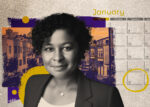 SF city staff learns about housing plan deadline on Twitter
SF city staff learns about housing plan deadline on Twitter
Trending
SF housing element moves ahead despite last-minute squabbles
Planning Commission approves plan for 82K homes by making “changes on the fly”

San Francisco is one step closer to having its mandatory eight-year plan to produce 82,000 new housing units approved before the Jan. 31 deadline imposed by the state.
The race to meet the compliance deadline meant that the Planning Commission had to make amendments to the plan in real time before approving it unanimously at its Thursday afternoon meeting.
“This is a pretty significant moment that we’re in and we’re just making these changes on the fly,” said Planning Commission President Rachael Tanner, as she asked for a reading of all the changes requested by commissioners. After the reading, she requested a round of applause for staff for their years of effort on the element and then the commission voted the element through to the Board of Supervisors.
The Planning Department will introduce the updated version of the element to the board’s Land Use Committee on Jan. 10 and it must be adopted and certified by the full board and the mayor by the end of that month.
Failure to have a compliant element by then could lead to the rubber-stamping of “builder’s remedy” projects, which remove most local discretion around developments with at least 20 percent affordable housing. The city also could lose millions in state affordable housing dollars.
The board cannot make changes to the element and must simply vote yea or nay on the 185-page document, which the Planning Department’s James Pappas called an “ambitious and pragmatic plan” that represented thousands of hours of work and the feedback of hundreds of people. He called the state a “rigorous and supportive partner” who had met twice with city staff in the week before the meeting and now appeared “comfortable” with the element as it stands.
One of the changes commissioners requested was to the wording in the “circuit breaker” portion of the element, which outlines what will happen if the city is behind on its housing goals by January 2027, mid-way through the eight-year cycle. This section was modified by staff at the request of the California Department of Housing and Community Development, which has the ultimate say in whether or not the city is in compliance. In a letter that the agency sent just one day before the hearing, HCD said the city should consider its “most aggressive rezoning scenario as part of adoption and implement the mid-term evaluation in consultation with HCD.”
Many members of the Race and Equity in All Planning Coalition, which has worked with the city on the element for the last two years, expressed outrage over what they saw as a last-minute addition that put “profits over people,” calling the possible additional rezoning and reduction in constraints a “developer dirty bomb” that would lead to the “extremely violent displacement” of the city’s lower-income residents and people of color.
But Planning Department head Rich Hillis said in the meeting that the “circuit breaker” would only come into play if the city was not on track with its housing goals and that if it was behind on affordable housing in particular, that’s what it would focus on in the latter half of the eight-year period, not market-rate housing.
“We target where we’re not producing,” he said.
Commissioner Kathrin Moore requested the wording change, calling for more pro-active community involvement should the additional rezoning be required, citing what she called a “deep unease” over that section of the element.
“This is the most unusual and challenging piece of work that I’ve seen in my time serving on the commission,” said Moore, who was first appointed to the group in 2006.
Read more
 SF city staff learns about housing plan deadline on Twitter
SF city staff learns about housing plan deadline on Twitter
 “Builder’s remedy” could ignite housing boom in San Francisco
“Builder’s remedy” could ignite housing boom in San Francisco
 YIMBYs prep for “zoning holiday” from builder’s remedy
YIMBYs prep for “zoning holiday” from builder’s remedy




